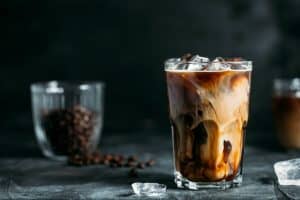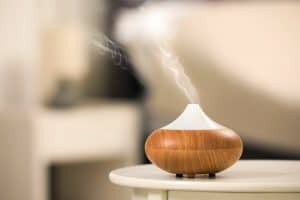Have you ever wondered why Starbucks’ products always taste excellent? Starbucks takes extra care in how they treat their coffee products and other beverages through water filtration. Keep reading to find out more about the Starbucks filtration process!
Starbucks uses the Triple-Filtered Reverse Osmosis water filtration system. It’s a 3-stage process that helps eliminate chlorine, fluoride, and other waste to ensure that the water being used to make the coffee and other beverages sold at Starbucks tastes good and is safe to drink.
As you can see, it is a complex but worthwhile method. In this article, we will go over what this Triple Filtered Reverse Osmosis method is and why Starbucks is keen on using it for all of its coffee and tea products. We will also address whether this type of water filtering process can be done at home. Without further ado, let’s dive right in.
Table of Contents
Concerns About Unfiltered Water
Before we talk about the Triple Filtered Reverse Osmosis process, we should address the elephant in the room and that is that many people do not want to drink unfiltered water, whether it’s just plain water or if it’s part of a drink like coffee. Two known contaminants that many are concerned with in their water are chlorine and fluoride.
Let’s briefly talk about these two chemicals.
Chlorine
Chlorine is an element or chemical that is common in unfiltered water, and adverse side effects can come from consuming an excess of chlorinated water. Some of these side effects include itchy skin, dried hair, coughing, tightness of the chest, and nausea.
You don’t have to drink it to suffer the effects, either. Many household cleaning products contain chlorine, and you can be exposed to its harmful effects by both breathing and touching the chemical in excess. Avoid drinking anything that could contain harmful levels of chlorine, and be careful not to breathe in chlorine products or touch them with bare skin.
Fluoride
Fluoride is added to most public water systems to prevent cavities. It is also naturally present in groundwater in many parts of the country.
The American Dental Association says that fluoride is safe and helps to prevent cavities in children and adults. This dental additive is controversial, and many people are concerned about having fluoride in their water.
Overall, the fact that these chemicals are often found in water is concerning, so it is no wonder why Starbucks uses a water filter before putting water in any of its drinks. After all, they wouldn’t want people to get sick because they get a drink from Starbucks every day as so many people do.
Triple Filter Reverse Osmosis Process

Now that we have briefly addressed the two major concerns in unfiltered water, we can move on to the water filtration discussion.
The filtration system that Starbucks uses is called Triple Filtered Reverse Osmosis, also known as the 3-stage RO. This system ensures that excessive amounts of both chlorine and fluoride are heavily reduced, if not eliminated, from the water that is used and provided by Starbucks.
Though the name of this water filtration system may sound complex, it really isn’t. It is basically a 3-step process of filtering out designated materials in an orderly fashion to ensure the best water quality possible. Let’s go over the 3 steps so that we can understand the process more.
Unlike most standard water filtration systems, the Triple Filter Reverse Osmosis system utilizes a pre-filter step that is focused on removing any debris or waste that may have had contact with the water. This is the first stage of water filtration. This sediment filter’s job is to remove garbage and debris that could degrade the carbon filter. It basically gets rid of all of the biggest junk in the water so that the carbon filter doesn’t have to deal with it, promoting the longevity and effectiveness of the system as a whole.
The second step in this unique water filtration system is getting rid of chlorine and other harmful chemicals that may be found in the water. The system utilizes a carbon filter to do that job. This filter uses activated carbon, which has been activated through a special process. Once carbon is activated, it becomes an adsorbent. In this case, the carbon filter absorbs the chlorine present in the water and prepares it for the final stage of the Triple Filter Reverse Osmosis system.
The final stage in this 3-stage process is where all other organic and inorganic compounds are eliminated from the water. Remember the name Triple Filter Reverse Osmosis? Well, the final step is performed by the RO membrane, which uses reverse osmosis to do its job. The RO membrane removes fluoride, metals, and other waste, heavily reducing the regular tap water’s micron of 100-200 mg/l to 1/10,000. After this step, the water is clean, safe, and ready to drink and be used to make beverages.
Technical Terms and Meaning

We have stated that the RO (reverse osmosis) membrane removes fluorine and other waste, but what is it really? Reverse osmosis is the process of utilizing a semi-permeable membrane to remove and/or separate ions, other molecules that are not needed, and all other waste. It is part of a water purification method that keeps water as clean and drinkable as possible.
With the word “triple”, we are saying that the water purification process involves filtering the water a total of three times.
Next, let’s explain more about what “activated carbon” means. Activated carbon simply means that a type of carbon (charcoal in this case) becomes adsorbent. Adsorbent means that some areas of the surface are available to soak up materials around it. The carbon has to be heated for it to reach an effective level of absorbency, so the carbon filter activates the charcoal by heating it up, activating it, and prompting it to absorb the chlorine and other chemicals in the water.
Lastly, we should note that reverse osmosis isn’t only for tap water, but water in general. As we have shared so far, reverse osmosis is most commonly used commercially. This means that if you drink bottled water, it has likely been filtered using reverse osmosis.
Residential areas use it in sinks and bathrooms so you can have clean water while washing your hands, bathing, and drinking. Some other purposes involve desalination and purifying alcohol to increase its value and make it more potent.
What Starbucks Products Have Filtered Water?

When it comes to filtering the water that Starbucks uses, one may think that the water is only served as ice water. This is not true. As mentioned beforehand, the water being filtered enhances products that use water, not just drinking water alone. You don’t need to be a coffee lover to know that coffee is a water-based beverage.
Even drinks that have quite a bit of milk such as a latte, macchiato, or frappe are traditionally made with water, so filtered water will certainly have an effect on these beverages as well. Most other drinks, such as their hot or cold teas and hot and cold coffee drinks, will have filtered water in them, though the amount of water they have will vary depending on the type of drink you order and the size of the beverage.
Even the baked items that Starbucks sells likely have filtered water in them. However, whether they do or not is unknown, as most Starbucks bakery items like their cake pops and muffins are not made in Starbucks stores.
Does Filtered Water Improve Starbucks Drinks?
Filtered water does improve Starbucks drinks in various ways, especially because the water is heavily filtered. Because Starbucks uses Triple Filtered Reverse Osmosis, all of the chemicals and other things in the water being used that could influence the taste of your Starbucks drink have been removed before the drink is served to you. This allows the flavor of the beverage to remain unchanged time and time again, at least until Starbucks changes one of its recipes.
It also prevents the water from smelling bad, which means when you are handed our coffee beverage, you can fully enjoy the smell of freshly brewed coffee. After all, you don’t want to be handed a hot coffee that smells like a mix of coffee and sewage, and you definitely wouldn’t want to drink it. Plus, if you are served a beverage that smells bad, you won’t likely come back and order anything.
Starbucks uses a complex water filtering system to make it so that customers return time and time again, no matter what their drink of choice is.
Quality Water for Personal Use?

To end this article, we will address whether you can filter your own water and attain the same high-quality water as Starbucks. In short, yes, anyone can attain the water quality provided by Starbucks. Let’s figure out why you should and how to do so.
To start off, I don’t believe anyone can create a 1-to-1 replication of Starbucks’ water quality. Starbucks has resources that aren’t available to everyone. However, some lower-grade reverse osmosis systems can be used for personal use. However, they are extremely expensive. If you are planning to create quality water on a consistent basis and are willing to spend a lot of money on one of these devices, I would say that you should go for it so you can enjoy fresh, clean, and tasty water.
However, if you want to drink filtered water but don’t want to pay a hefty price tag, most normal water filters will do the trick.
Returning to the idea of purchasing a reverse osmosis device, there are many brands that offer excellent devices for home use. Any water filtering method for the first two stages is simple and can be done with most regular water filtration systems, but it’s reverse osmosis that we’re looking for here.
Brands such as SimPure, iSpring, and AquaTru are reputable companies that ensure the best experience for reverse osmosis at home. Again, the devices are not cheap, and sufficient investment and planning are required, as the price of a single reverse osmosis device can range from $350 to $1,200. That doesn’t include the cost of regular maintenance or replacement parts, which will be required to keep your filter running properly.
For a cheaper alternative, a humidifier may also be an option for the reverse osmosis process. This is something that many people may not know, but with proper preparation, a humidifier can act as an RO membrane.
Some argue that using a humidifier is only useful when you don’t have any other options for a reverse osmosis alternative. Be wary though, since using a humidifier is known to cause adverse effects such as allergic reactions, so you may want to avoid this option.
Though it is an alternative when no other options are available, even this does not fully justify using one, and is better to spend the money on a dedicated reverse osmosis system or just purchase distilled water.
Overall, Starbucks takes great care in how they treat and filter the water that is used to make coffee and tea products via the Triple Filter Reverse Osmosis process, only offering the best for their customers. If you want a similar quality of water, then you may purchase a dedicated reverse osmosis system along with your regular water filtration one.
However, if you want to save money but still enjoy clean, filtered water on a regular basis, simply get a cup of ice water from Starbucks when you pass by it every day. After all, Starbucks locations can be found on nearly every street corner in many cities, especially large cities. After all, the company gives out ice water to customers for free. Plus, if you are already there so you get get a morning pick-me-up, it won’t take any longer for you to get a cup of ice water.
You could also purchase distilled water from the grocery store, as gallon-sized bottles of distilled water only cost $1 to $3 depending on your grocery store and where you live.

